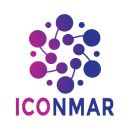Speaker
Description
Power conversion efficiency (PCE) from naturally-sensitized DSSCs is typically in the average range (<0.05–1.7%) and requires a thorough understanding of the role of pigment’s molecular structure, electronic properties, anchoring groups, and conjugated double bonds or free π-electrons for improved PCE from enhanced carriers transport and decreased recombination. Narrowband absorption and poor binding with photoanode are the limitations for band gap using natural dye that need to overcome. Therefore, by building supervised classification models, it would allow the scientific community to further study the impact of band gap on the performance of natural dyes. We aim to optimize the non-linearity of band gap using adaptive neural fuzzy inference system (ANFIS) model for natural dye sensitizers performance based on bandgap energy, anchoring group, and HOMO-LUMO. In this study, natural dyes will be extracted from different anthocyanin types. Data collection using UV-VIS and Cyclic voltammetry (CV) for HOMO-LUMO, and bandgap energy will be collected. To further interpret the data collection, ANFIS model will design comprise of a five-layered neural network that uses fuzzy inference system concepts. Input (π bonds, anchoring group, HOMO-LUMO, bandgap), hidden, and output layers (% of PCE) made up the structure. This work shows the potential of adopting trained classifiers for analysing natural sensitizer’s abilities to inject and separate generated electron-hole pairs for producing renewable, cost-effective, and sustainable energy.
Keywords: Dye-sensitized solar cell; Bandgap energy; Cyclic voltammetry; Natural dyes; Power conversion efficiency

